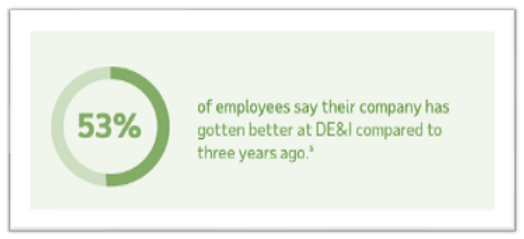Decoding Compensation: A Holistic Perspective for Employees and Leaders
Imagine a workplace where employees believe their compensation not only reflects their skills but also actively contributes to their sense of...
2 min read
 Rhonda Aghaie
:
Jul 8, 2024 10:43:50 PM
Rhonda Aghaie
:
Jul 8, 2024 10:43:50 PM
 The longstanding philosophical question of which came first, the chicken or the egg, has puzzled minds for centuries. Similarly, the debate on whether profits or employees hold greater importance continues to be the source of much conflict. By drawing parallels between these two debates, we can explore the interdependent relationship between profits and employees, and how prioritizing one can influence the other.
The longstanding philosophical question of which came first, the chicken or the egg, has puzzled minds for centuries. Similarly, the debate on whether profits or employees hold greater importance continues to be the source of much conflict. By drawing parallels between these two debates, we can explore the interdependent relationship between profits and employees, and how prioritizing one can influence the other.
The interconnected nature of profits and employees just as the chicken and the egg are inseparable. While not the conventional wisdom, it's true that profits and employees share a symbiotic relationship within any organization. Profits are undoubtedly a vital goal for any business, as they ensure financial stability, growth, and shareholder returns. However, the means to achieve sustainable profits lie in the dedication, productivity and satisfaction of the employees who drive the company forward.
The Chicken
We liken the Chicken to the company or “the profits” as both bear the responsibility of protecting those under their care. Many argue that by prioritizing profit margins, cost-cutting measures, and short-term gains, businesses can create a solid foundation for success. The thesis is that these profits can be reinvested into employees over time. It’s a wonderful, and completely understandable approach to the conversation. The irony is that this approach – while it claims to focus on long-term success - neglects the long-term consequences associated with employee dissatisfaction, high turnover rates, and reduced productivity, similar to disregarding the welfare and well-being of the egg.
The Egg
Proponents of prioritizing employees assert that cultivating a happy and engaged workforce is the key to success, just as the egg holds the potential for new life. By investing in employee development, fostering a positive work environment and offering competitive benefits, organizations find many critical returns. These include improvements to:
• morale
• productivity
• loyalty
• commitment
• creativity/innovation
• a customer-centric workforce
We are among a group of many tenured businesses who have found that this is the strategy to maximize long-run profits. In other words, we now know that The Egg came first. You’re welcome, world!
The Lesson
Wise business leaders recognize the importance of striking a balance between profits and employees. Like most things, balance is the real answer here. Just as the chicken and the egg rely on each other for existence, successful organizations understand that both elements are integral to sustainable growth. Prioritizing employee satisfaction and well-being can enhance productivity, reduce turnover costs, and foster a positive corporate culture, ultimately contributing to higher profits.
Like most things, balance is the real answer here. Just as the chicken and the egg rely on each other for existence, successful organizations understand that both elements are integral to sustainable growth. Prioritizing employee satisfaction and well-being can enhance productivity, reduce turnover costs, and foster a positive corporate culture, ultimately contributing to higher profits.
While it’s clear that we suggest the people pillar as critical to the success of any organization, businesses must adopt an approach that recognizes the interdependencies between profits and employees. By establishing a strong financial foundation while simultaneously prioritizing employee engagement, companies can harness the collective power of profits and motivate employees to drive long-term growth.
Ultimately, the chicken-and-egg dilemma mirrors the ongoing debate about profits versus employees in business. Just as the chicken and egg are inseparable, profits and employees share a reciprocal relationship within organizations. Striking a balance is key, as wise business leaders recognize the interconnected nature of these elements. By embracing a balanced approach, acknowledging the importance of both profits and employees, businesses can create an environment where both flourish hand in hand.
The obvious question is “how”…
• How do I strike the right balance?
• How do I invest the profits to ensure that I’m getting the right results?
• How do I convince my shareholders and investors that these investments are necessary?
What keeps you up at night? Let us know in the comments, and we look forward to helping you through the journey.

Imagine a workplace where employees believe their compensation not only reflects their skills but also actively contributes to their sense of...

Imagine a boardroom where voices harmonize from different backgrounds, a mosaic of perspectives painting the canvas of innovation. Now, picture a...

In the digital age, where information is king, the HR department plays a pivotal role in managing and safeguarding sensitive employee data. As...